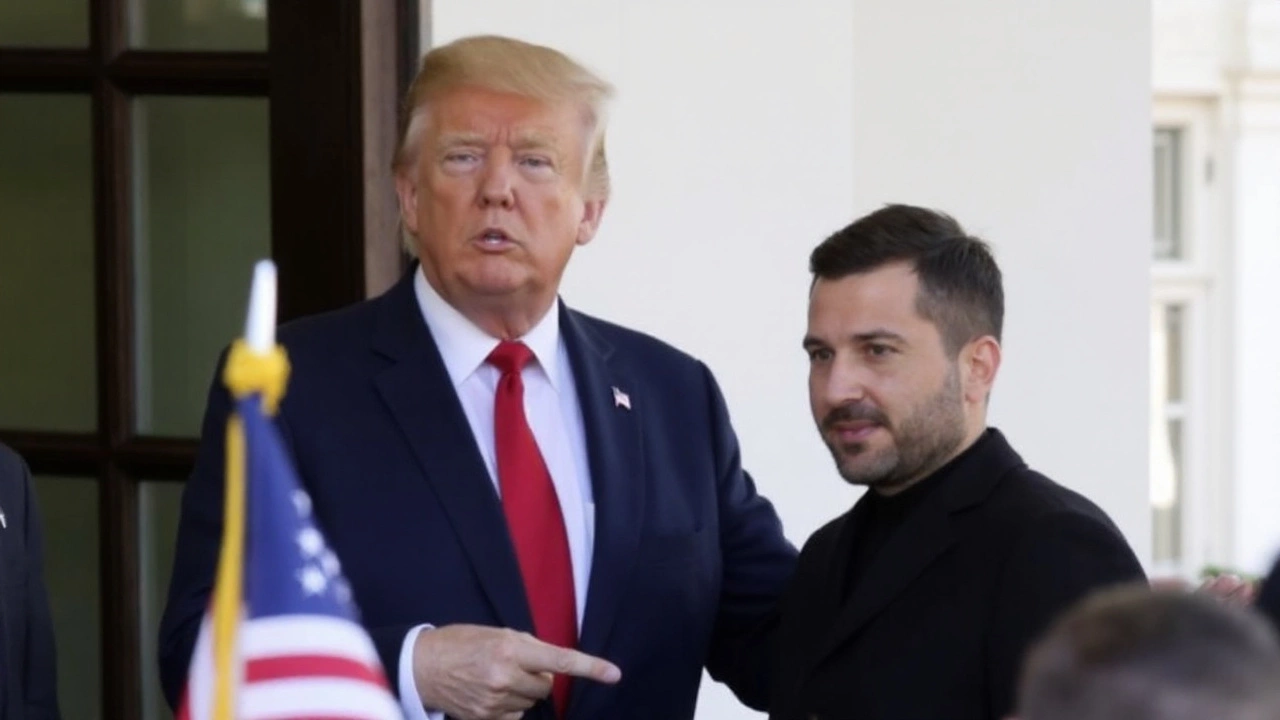
Trump’s Pressure on Zelenskyy: No to NATO, No Crimea, and Russia’s Push for Donetsk
Donald Trump is not known for subtlety, and his meeting with Ukrainian President Volodymyr Zelenskyy at the White House was no exception. Just days after sitting down with Vladimir Putin in Alaska—where the Russian leader flat-out rejected a ceasefire and demanded Ukraine give up its entire eastern Donetsk region—Trump called the shots in a way that surprised many diplomats watching closely.
Trump used his own social media megaphone to set the tone, claiming Zelenskyy could end the war with Russia “almost immediately, if he wants to.” What does that mean in Trump-speak? Clear as day: Trump said Ukraine won’t regain control of Crimea, which Russia took back in 2014. He also slammed the door shut on Ukraine joining NATO. No ambiguity—these were his red lines for peace discussions going forward.
All of this played out right after Russia launched its heaviest attack of August on Ukraine. The escalation was hard to ignore, and it gave sharper edges to the talks as European leaders, including Germany’s new chancellor Friedrich Merz, gathered in Washington hoping for a breakthrough.
Roadblocks and Diplomatic Drama: Bilateral Talks, Frustrated Europeans, and Security Promises
Despite fears of another public clash like their tense February Oval Office exchange, Monday’s summit was polite, if a little icy beneath the surface. There were clear divides: Trump pressed for quick concessions and a direct meeting between Zelenskyy and Putin, followed by a three-way session with himself in the room. He even called Putin from the White House to sell the idea, but the Kremlin wasn’t impressed, offering only to send junior officials to upcoming talks.
Putin’s demand? Ukraine must hand over all of Donetsk and accept Russia’s terms. Zelenskyy, for his part, didn’t sound close to budging, and European leaders backed him up. Merz put it bluntly with an analogy: giving up part of the Donbas would be like the U.S. surrendering Florida. As Merz said, this isn’t a decision any outside power can impose—Ukraine has to make the call itself.
Washington’s tone was clear. While Secretary of State Marco Rubio admitted both sides might need to make real concessions, Trump dangled U.S. security guarantees for Ukraine if a deal comes through, though he didn’t offer specifics. Meanwhile, Russia firmly rejected the idea of any NATO boots on the ground or security presence in Ukraine.
European leaders left the table with little new progress—no breakthrough, only cautious support for further direct talks. On the sidelines, expert voices argued for Trump to drop the carrot-and-stick routine and instead ramp up pressure on the Kremlin: more targeted sanctions, plus extra military aid to Ukraine. The logic? If Russia knows the West has serious resolve, Putin might finally see a reason to dial down the war.
The message buried in all the diplomacy: The balance of power isn’t shifting anytime soon. Trump wants fast results, but Russia’s not playing ball, Ukraine’s not caving in, and Europeans aren’t up for dictating surrender terms. Now, everyone waits to see if direct talks—maybe with Trump holding court—can get beyond the posturing and deliver actual peace.